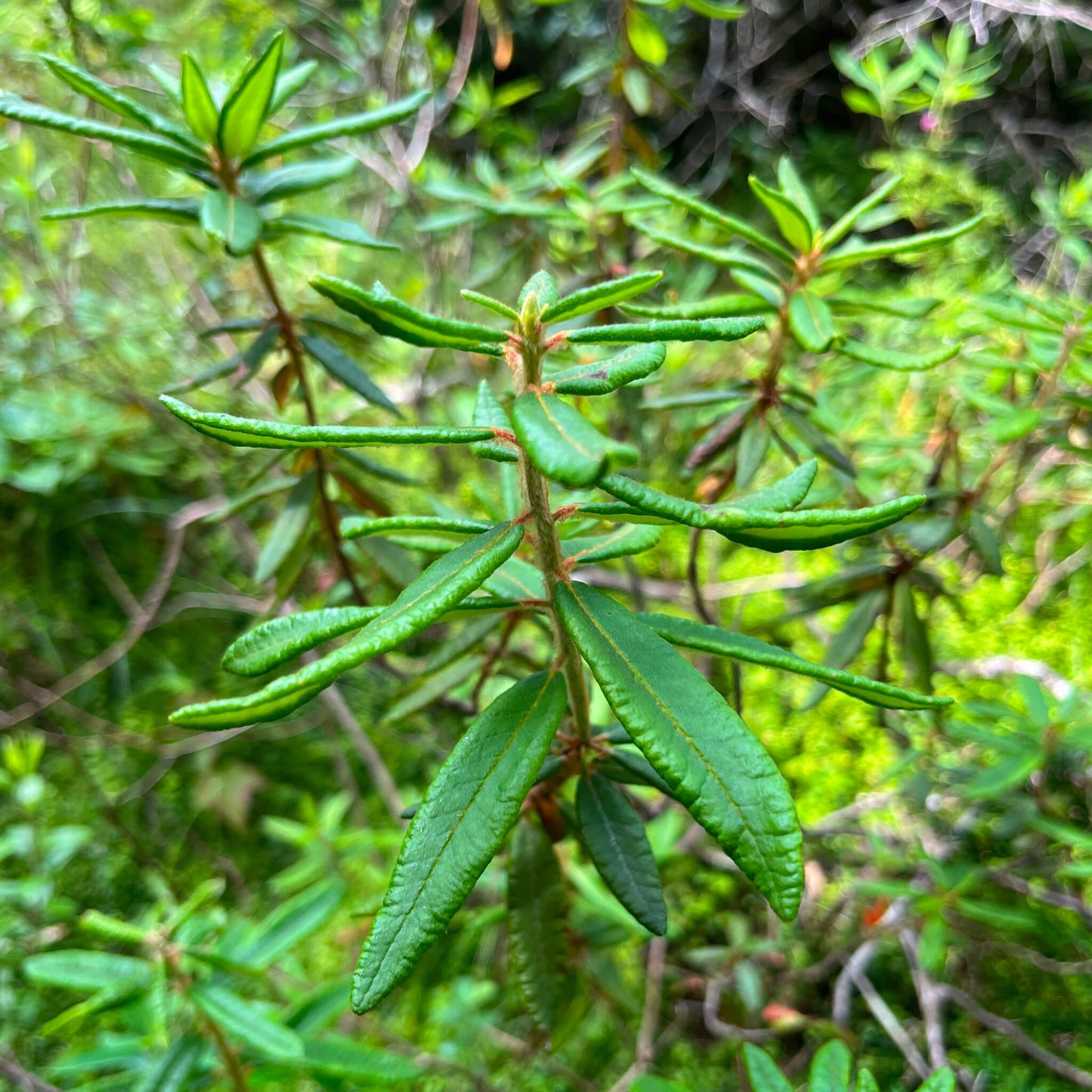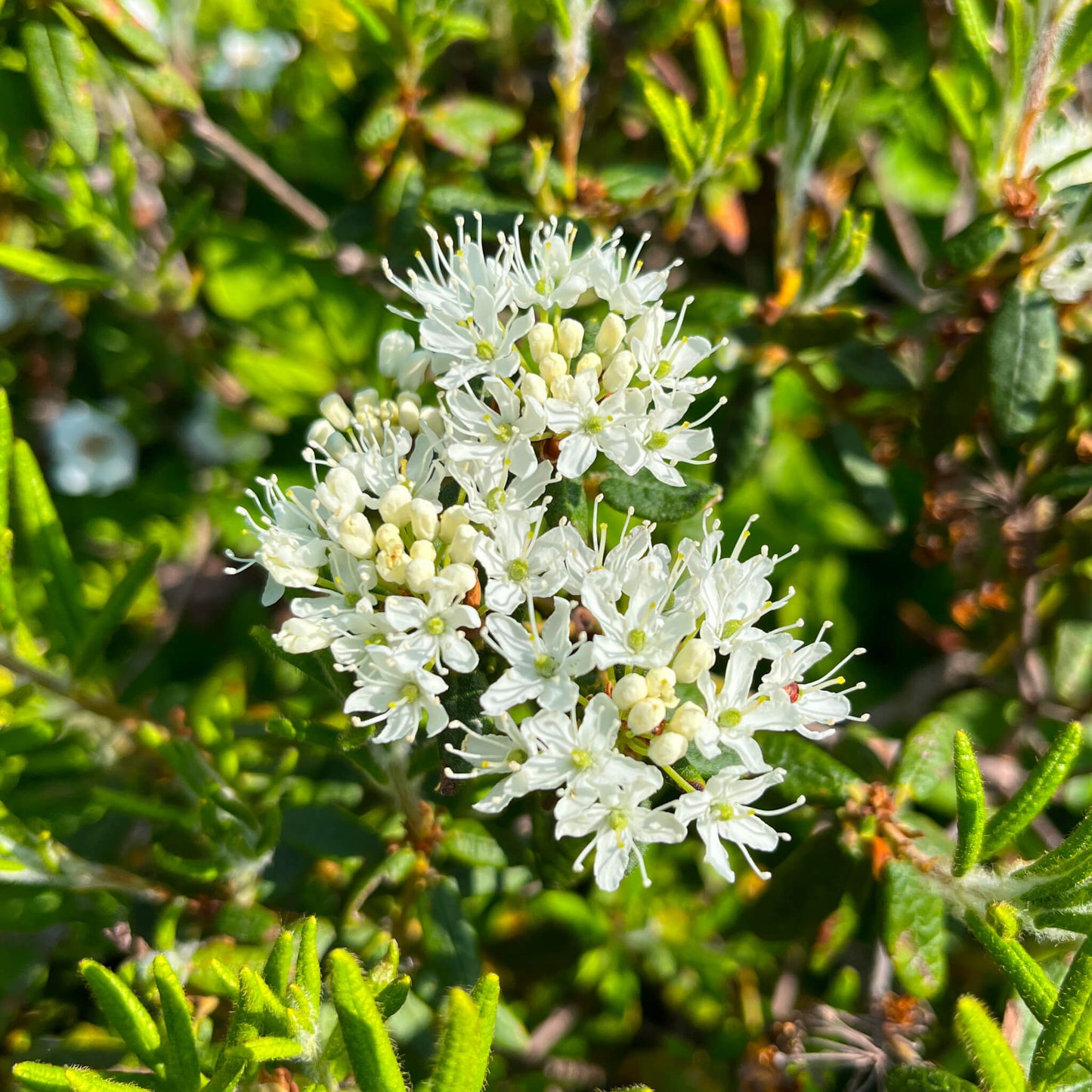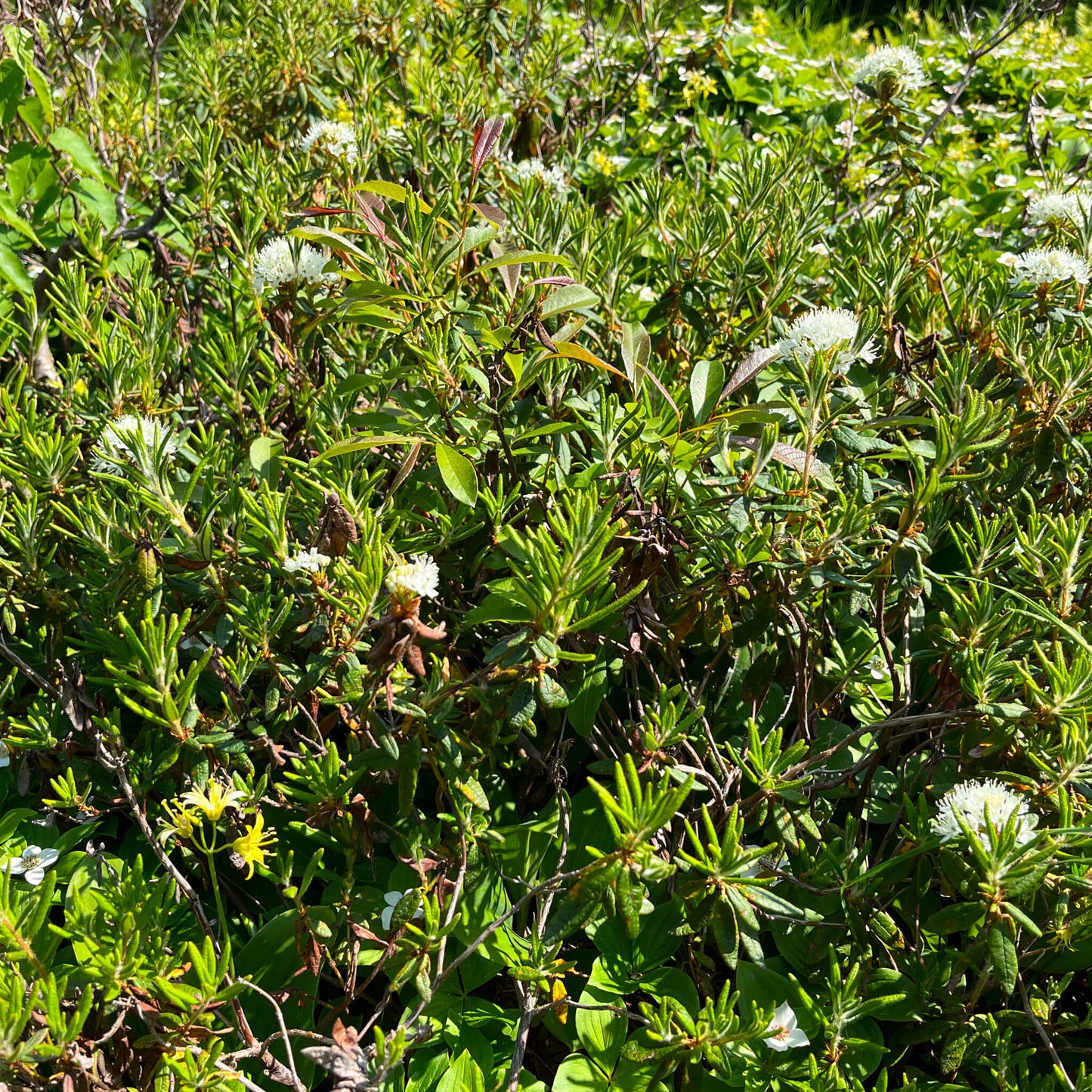For successful seedlings,
see the growing notes at the bottom of the page!
Labrador tea (Rhododendron groenlandicum) is a native shrub that thrives in mixed and boreal temperate forests, especially in the acidic soils of bogs across Canada and Greenland. This low-growing, twisting plant reaches heights of 30 to 120 cm and adds charm to garden beds or rock gardens with its spring bloom of white flower clusters. Its foliage is green on top, while the underside is covered in orange fuzz.
Medicinal and Culinary Uses
Labrador tea has antioxidant, anti-inflammatory, and antiseptic properties. Its leaves are traditionally infused to create a herbal tea that helps relieve inflammation and supports the immune system. In cooking, it can also be used as a spice, lending a resinous flavour with hints of pine and citrus and a subtle sweetness.
Ecological Roles
Labrador tea plays a significant ecological role in boreal and bog ecosystems, providing shelter and food for various insects. Its presence helps stabilize acidic soils and wetlands. In naturalistic gardens, it adds a rustic touch while supporting local biodiversity, acting as a valuable resource for native wildlife.
Labrador tea seeds require cold stratification to ensure germination. See the cultivation notes below for more details.
Akène cannot assume any responsibility for the use of plants for therapeutic purposes. Always seek advice from a professional before using a medicinal or edible plant.
Sowing and Growing
Technical Details
Seeds per packet: 50
Family: Ericaceae
Scientific name: Rhododendron groenlandicum
Life cycle: Perennial
Hardiness zone: 1
Soil type: All types
Soil moisture level: Medium to wet
Soil - additional attributes: Peaty. Acidic. Poor.
Light: Sun, part shade
Blooming: May to June
Spacing: 50 cm
Height: 120 cm
Deer resistance: Moderate
Stratification: 30 days
Scarification: No
Germination time: 15 to 30 days
Sowing depth: Surface






